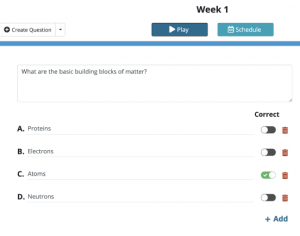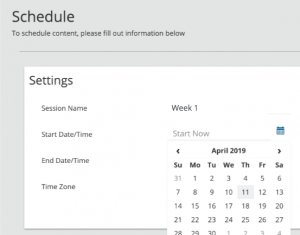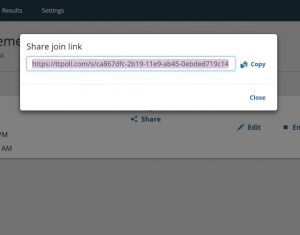Inside and outside of class: Using Echo360Point for interactive homework

Real-time engagement and assessment have defined Echo360Point from the very beginning. Now, for the first time, our scheduled polling feature moves Echo360Point outside of the classroom and lets instructors assign interactive questions that students can answer anytime.
The scheduling feature is a part of our web-based Echo360Point platform, and using it to create a homework assignment or survey is simple.

Step 1:
Create content

Step 2:
Schedule content

Step 3:
Share questions with students

Step 4:
Access and evaluate responses
Following these steps, you can create, schedule and administer out-of-class assignments in a matter of minutes. Furthermore, student responses are sent directly to your online account, so you can review them at any time.
Want to give it a try? Here are some ideas for using Echo360Point for interactive homework to keep students engaged in class material even after they leave the classroom.
Check student comprehension prior to class
Making sure students complete assigned readings is a familiar challenge. This is particularly crucial in flipped classrooms and other active learning environments, since in-class activities will fall flat without a solid pre-class foundation.
Interactive homework questions are an opportunity to do a high-level overview of the material that motivates students to do the reading, highlights which points are most important and provides insights into what students understand and what areas need more attention during class. Assigning a small point value to each question can increase motivation even more, and result in more productive class discussions and, as a result, a greater understanding of the subject.
Send discussion questions after class
Students are often hesitant to speak up, and will frequently avoid asking questions in class in order to prevent potential embarrassment. Open-ended homework questions provide the opportunity for these students to communicate with you in a low-stress way about what they found confusing, what they are hoping to discuss during class or even what they found fascinating and want more information about.
Have students submit their own questions
The more students engage with a topic, the more they remember and understand. In addition to basic pre-class reading comprehension questions, you can also schedule more in-depth questions after the class has ended to encourage students to build on their knowledge.
Conduct a survey on class opinions
The scheduling tool is a great way to get a sense of your students’ opinions on a wide range of topics. This includes surveys related directly to the subject matter – for example, gathering students’ thoughts on the first amendment for a constitutional law class – that would then serve as a springboard for in-class discussions.
It could also be an opportunity to conduct mini-evaluations of the class itself. This would let you gather feedback long before the dreaded end-of-class teaching evaluations while it is still possible to address student concerns.
